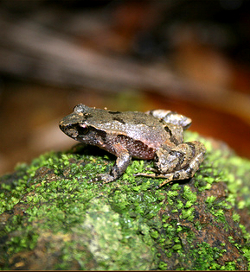Frog sounds show eco-health
 Australian researchers are drawing on the love lives of frogs to better understand whether an ecosystem is healthy.
Australian researchers are drawing on the love lives of frogs to better understand whether an ecosystem is healthy.
A recent study led by Australia’s national science agency, CSIRO, with Griffith University and the Forestry Corporation of NSW, recorded the sounds of frogs near the riverbanks of the Murray-Darling Basin.
The aim was to create and test call recognisers – a software that automatically listens to and counts frogs to clearly detect a range of different species.
The researchers recorded frog sounds across 20 sites nested in the Koondrook State Forest along the Murray River in NSW, and successfully detected eight different species.
Dr Simon Linke, bioacoustics expert at CSIRO, said frog sounds are a key indicator of a healthy ecosystem and the success of water delivery.
“Some of the frogs make high frequency chirps, some 'bark',” Dr Linke said.
“But our favourite frog – the aptly named Pobblebonk – makes a characteristic ‘boing’ that sounds like plucking a banjo.”
While the first stage of the project focussed on mastering the call registers and recognising sounds, the next stage of the project compares frog sounds from sites with plenty of water to those with low water flow to understand the differences.
More details are accessible here.








 Print
Print